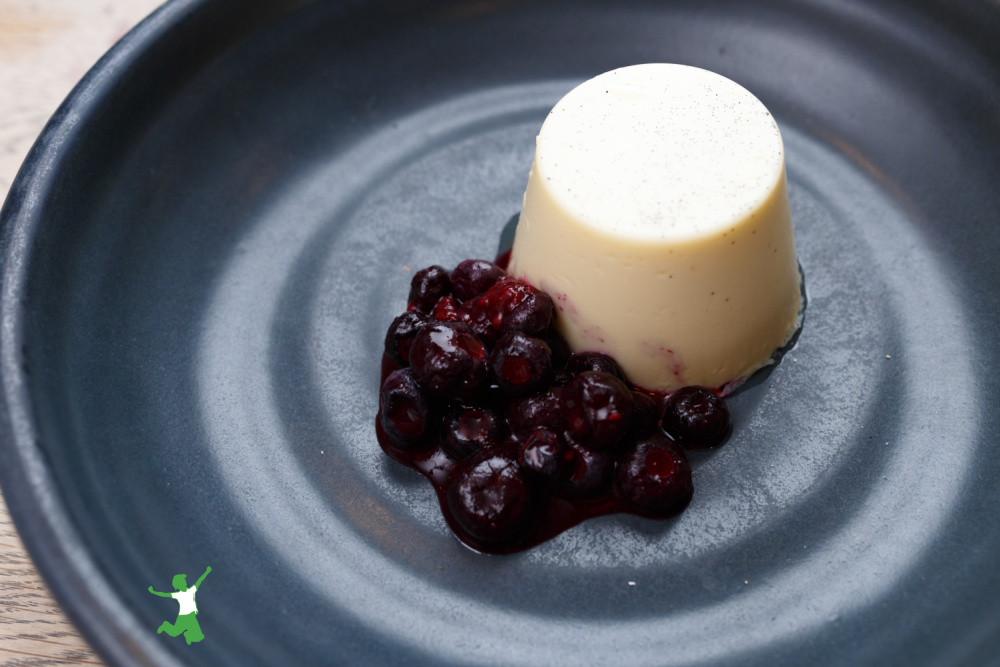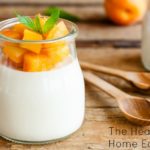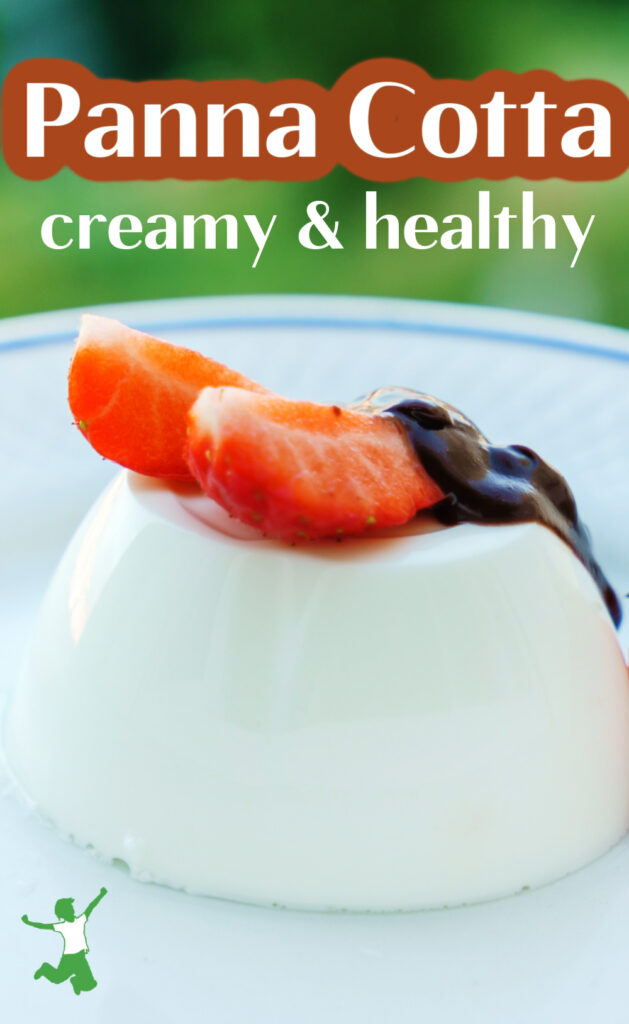Table of Contents[Hide][Show]
How to make homemade panna cotta the traditional way with heavy cream and a whole food sweetener for a healthy, low-sugar dessert.

This recipe plus video lesson features my traditional foodie friend Maureen Diaz.
She demonstrates how to make the traditional Italian dessert known as panna cotta.
Maureen is a Mother of 9 and has been the Chapter Leader for the Weston A. Price Foundation for many years.
She currently hosts the podcast God’s Good Table with her daughter Erin.
Many thanks to Maureen for sharing her knowledge with all of us!
Serving Suggestions
Panna cotta is a must-learn dessert if you love cream!
While raw grassfed cream from a local farm is best for this recipe, you can use pasteurized cream in a pinch. The sturdy fatty acids in cream are resistant to heat damage (unlike milk proteins which become denatured).
If you don’t have a local dairy farm that serves your community, I suggest taking a look at this brand of cream that is widely available.
Another option is to use a turkey baster to remove the cream from raw milk (or low-temp pasteurized, “cream top” milk).
*Do not use ultra-pasteurized cream, as it is highly allergenic from excessive processing.
For more panna cotta serving suggestions, check out the linked article with pictures!
Sweeteners and Substitutions
Please do not use honey for this recipe instead of maple syrup.
Honey should not be cooked according to traditional Ayurvedic cuisine.
If you prefer to use a fruit sweetener, I suggest date syrup.
Gelatin (ideally a brand tested for purity) must be used as the gelling agent. Hydrolyzed collagen, though similar, will not work.
Use whole coconut milk or homemade almond milk if desired for a dairy-free panna cotta.

Panna Cotta Recipe
Panna cotta recipe made with only four whole food ingredients for a healthy, low-sugar dessert as is traditional to Italian cuisine.
Ingredients
- 2.5 cups cream heavy, preferably grassfed
- 2.5 tsp gelatin unflavored, preferably grassfed
- 2 Tbl maple syrup preferably organic and very dark
- 1 tsp vanilla extract or 1 vanilla bean
- fresh berries or other fruit for topping
Instructions
-
Dissolve the plain, unflavored gelatin in a tablespoon or two of boiling water.
-
Pour one cup of cream into a medium sized saucepan. If using vanilla bean, slice lengthwise down the pod, scrape out the seeds and add them to the saucepan (discard the pod).
-
Stir the water with dissolved gelatin into the cream and vanilla bean mixture in the pan. Turn on low heat and stir until completely dissolved.
-
Turn off the heat and add the rest of the cream and maple syrup. Blend in vanilla extract if you did not use vanilla bean in the first step.
-
Pour the panna cotta mixture into a serving dish, cover and chill for an hour or two until set.
-
Serve when chilled. Top with berries or other fruit if desired. It is simply delicious served plain too.
-
Keep panna cotta leftovers refrigerated in a glass bowl with a lid. It will keep for about 4-5 days.
Recipe Video









I'm bookmarking this to try this weekend! Looks great!
Hi Sarah, how fun it was to "meet" you (and Maureen) right in your own kitchen. I have the same exact cabinets, stove (and saucepan, too!), but yours are much cleaner, especially your stove! 🙂 I love creme brule and bet that this tastes a little like that, can't wait to try it.
Thanks for linking this to Real Food Wednesday!
Kelly
Hi Jennifer, I haven't ever tried the gelatin from bone broths as a substitute for unflavored gelatin powder. If you give it a try, please post another comment about how this worked out. Be aware that even bone broths have a tiny bit of naturally formed msg in them. Eating the powdered gelatin with a high fat dessert such as panacotta is extremely protective, by the way, for the very small amount that might be present.
Can we go even less processed…how can I isolate the gelatin from my bone broths? Since reading Sally Fallon's cookbook, I avoid anything that may any way resemble changes in the protein that can give me a reaction like MSG.
Can this be made without gelatin or with something else?
Jennifer – Lawrenceville, GA
This is wonderful! I think I know what I'm going to fix for my husband now for his birthday dessert this weekend!
Hi Beth, yes, I would say that this is a very healthy treat to have often. I myself eat high fat (50-60%) and I am quite slim (see my food log that I posted a few weeks back). Of course, the fat I do eat are all whole, unprocessed fats like what would be in the panacotta – NOT factory fats like canola, soybean oil, etc that are used in processed foods.
Another great video Sarah!
Is this a good healthy "treat" or is it healthy enough to have often? I noticed Maureen said she eats it often, but she also said she was on a high fat diet. Would it be a good choice for someone that doesn't drink much raw milk? Or would kefir be a better option?
Thanks! Beth
Thanks for posting this and reminding me of this wonderful tasty dish for us low carbers. And both of you look so healthy and radiant in the video. Really a treat to watch what good food does.
Thanks for the video and recipe! Just wondering, however, if that gelatin you are using is a kosher variety, and if not, can you recommend a kosher gelatin or another substitute? I appreciate your help with this.
HI Naomi,
I have Jensens Gelatin and it is 100% beef and says certified kosher.
Hi Naomi, the Great Lakes brand of gelatin in the video is not kosher as it is from a porcine source. The only other brand of plain gelatin I know of is Jensen's which is a beef gelatin, which I'm thinking would be kosher?